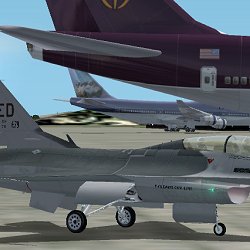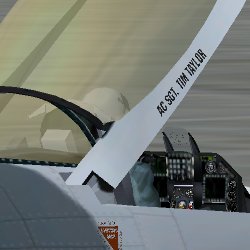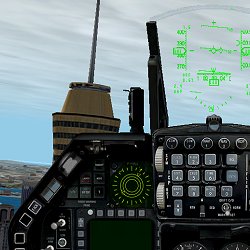
Lago F-16
MiGMan’s Combat Diary, 2004
Basic flight
As the excellent .pdf manual asserts, flying the F-16 is quite simple compared to most aircraft. The computers literally do most of the work for you. You steer, add power and away you go, climbing at a fantastic rate if so desired. An F-16 with no weapons and a light fuel load can in fact sustain a vertical climb, although I didn't manage to replicate this in the sim because we couldn't work out how to jettison weapons and external fuel tanks.
Basic flying was easy but paradoxically I found that longer flights were made slightly irksome by the confusing (authentic) F-16 autopilot design which requires two switches to be set in various combinations to change modes.
I never did manage to engage 'altitude hold' mode and on a ½ hmy flight from Aalborg to Kastrup in Denmark was all over the sky. (Of course I would blame the F-16 for that).
The F-16 moves along rather quickly and even though throttled back to cruise at 250 knots, I found constant attention had to be paid to the pitch. This is not really a criticism of the product, the autopilot probably works just as advertised, but I was were put off longer flights by the F-16's rather abstruse avionics… and to the dismay of the cowboy pilots at this virtual test facility there was no GPS either! Ce'st la vie - next time I'll take the Lear jet on the longer jaunts and stick to buzzing the tower and flying nap of the earth in the Falcon.
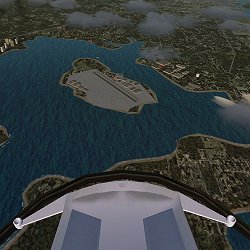
Only a few seconds after takeoff and the rear view is spectacular.
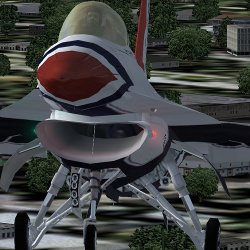
High detail level extends to the undercarriage and turbine buried deep in the fuselage.
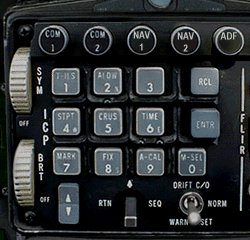
The ICP is where you enter nav frequencies.
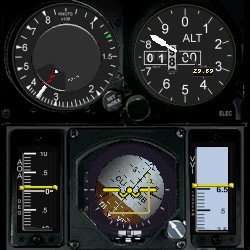
The cockpit has eight - yes eight ! - panels.
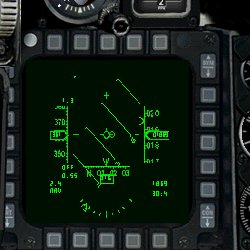
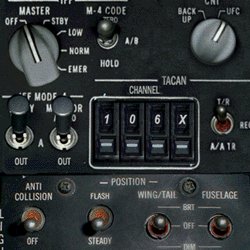
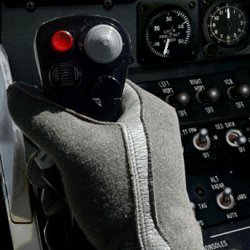
You can switch between them with the standard Shift 1-9 keypresses or with a mouse-clickable icon which is shaped like the cockpit. Clicking on a panel symbol once displays the panel and clicking again hides it. This type of intuitive interface is a real bonus for getting around what seems to be a daunting cockpit.
Flyers used to F-16 combat simulations will find that every switch and button is here and where the simulation supports their functions, they work.
As you would expect the radar and weapons targeting systems are the least functional in Microsoft Flight Simulator 2002, although the air radar module by Eric Mariano can be activated in the left Multi-Function Display (MFD). Using this makes ymy 'practice interceptions' of the hapless AI controlled FS aircraft more practical and in fact the manual authors recommend this as a fun way to use the F-16 in Microsoft Flight Simulator 2002.
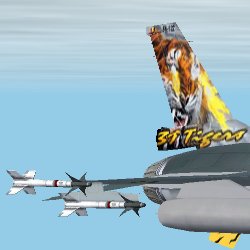
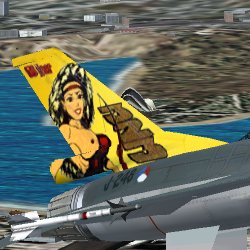
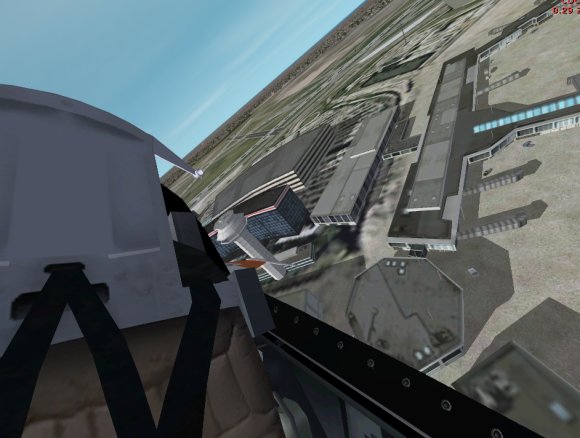
The virtual cockpit is one of the best I've seen in Microsoft Flight Simulator 2002, making the F-16 a good choice for seeing the sights.
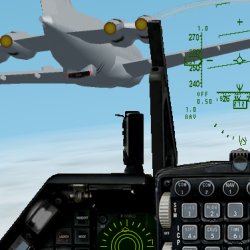
Air refuel
When using this module I experienced a couple of system crashes - that is the Windows system crashed, not just the F-16 avionics system - so I ended up relying on the show aircraft labels' function in the host sim to effect intercepts. This led to the discovery that the 'collision bubble' in FS2002, or at least on the aircraft we tried, doesn't really accommodate close formation flying, with the F-16 usually coming off second best, minus a wing or two.
This wasn't a problem during aerial refuelling though - the main problem there being my total inability to connect with the basket. As described in the recent review of Lago's Tornado in PC Pilot Magazine, this menu addition to Microsoft Flight Simulator 2002 allows you to call up a tanker and top up on go-juice, which if you are heavy on the throttle might be only 12 minutes into ymy flight!
The cockpit of choice when performing these intercepts and refuels was the fabulous virtual cockpit. The vcp scrolled quickly and the sensational view out really makes the F-16 a great aircraft for sightseeing. Reading the instruments and Heads Up Display (HUD) was difficult on my preferred setting of - 50% zoom, but zooming in to 100% or closer rendered the HUD and instruments in crystal clear detail.
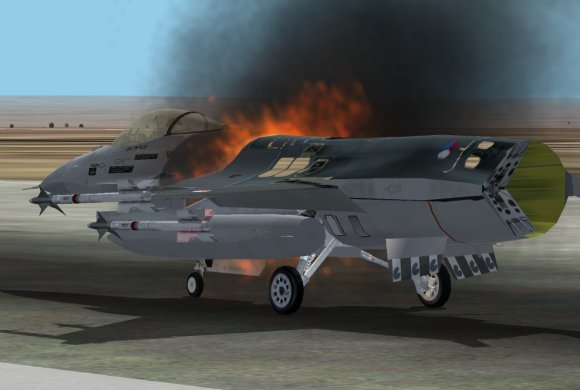
That damage modelling has been given some priority was discovered on one of myr 'harder landings'. The right wing fell off and an impressive fire was raging behind the cockpit.
External detailing is impressive. Looking at the nose I was startled to see the huge turbine rotating deep inside the belly mounted air intake. The bubble canopy is a smooth transparent complex curve with the appropriate amount of gold tint. The undercarriage extension / retraction sequence is a delight to watch, as is the bobbing of the independently sprung wheels when taxiing.
I had hours of fun just examining the aircraft and liveries and making my own 'virtual dioramas' by moving to picturesque locations in FS2002. Besides flying the virtual aircraft, this level of modelling surely acts as a kind of 'virtual scale modelling' , without having to mess about with glue, paint and assembly. Combined with the scenery, lighting and weather capabilities of the FS2002 engine and it's ver easy to set up satisifying shots of ymy favourite F-16 in flight.
What more could a package like this want? Perhaps some pre-planned flights and static aircraft at a military airbase or 2 as we saw in Just Flight's " Air Power: The Cold War (2000)".
As it stands this product represents the state of the art in aircraft modelling for FS2002 and that's pretty good!
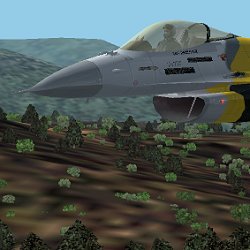
I flew all over South East Asia looking for an opportunity to evaluate the camouflage value of a Tiger paint scheme.
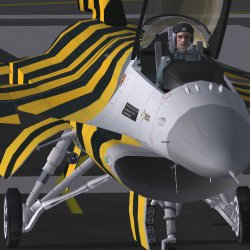
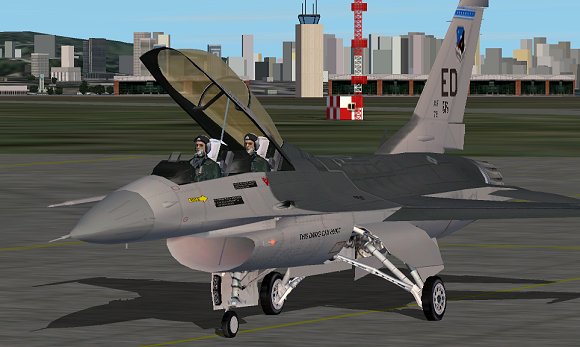
Fly the D-model and you can take a (virtual) friend along.
